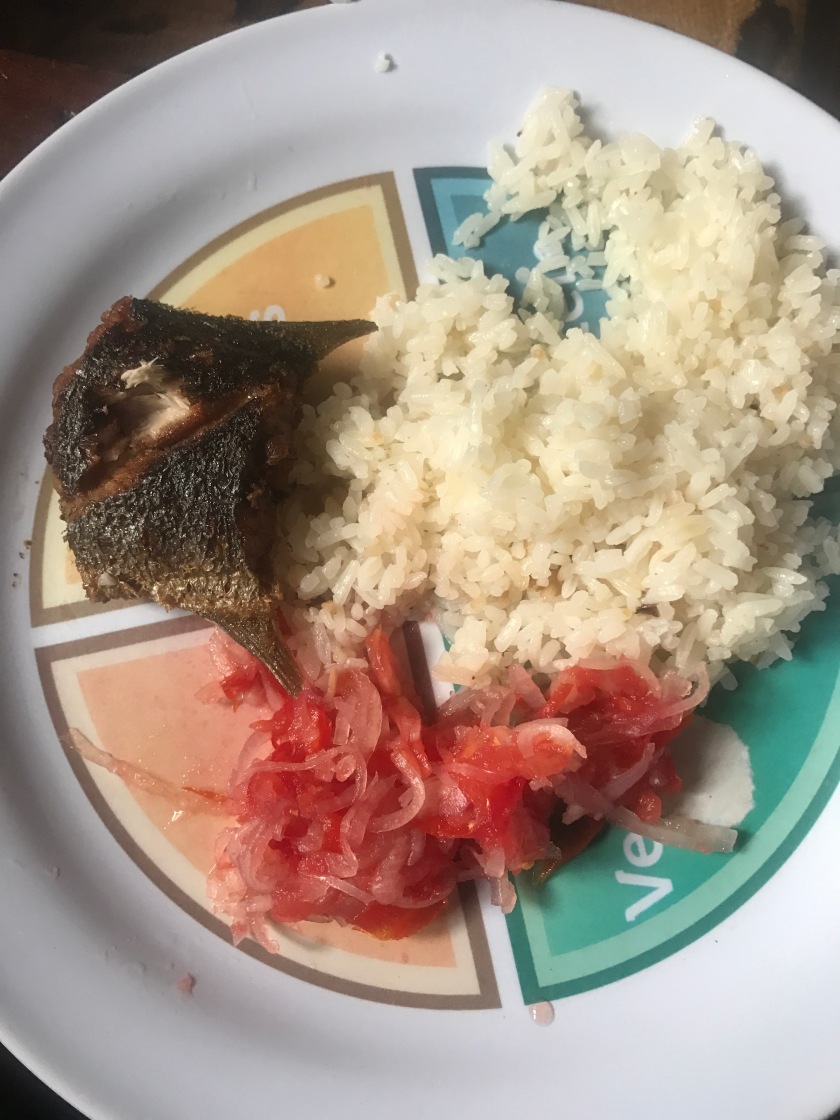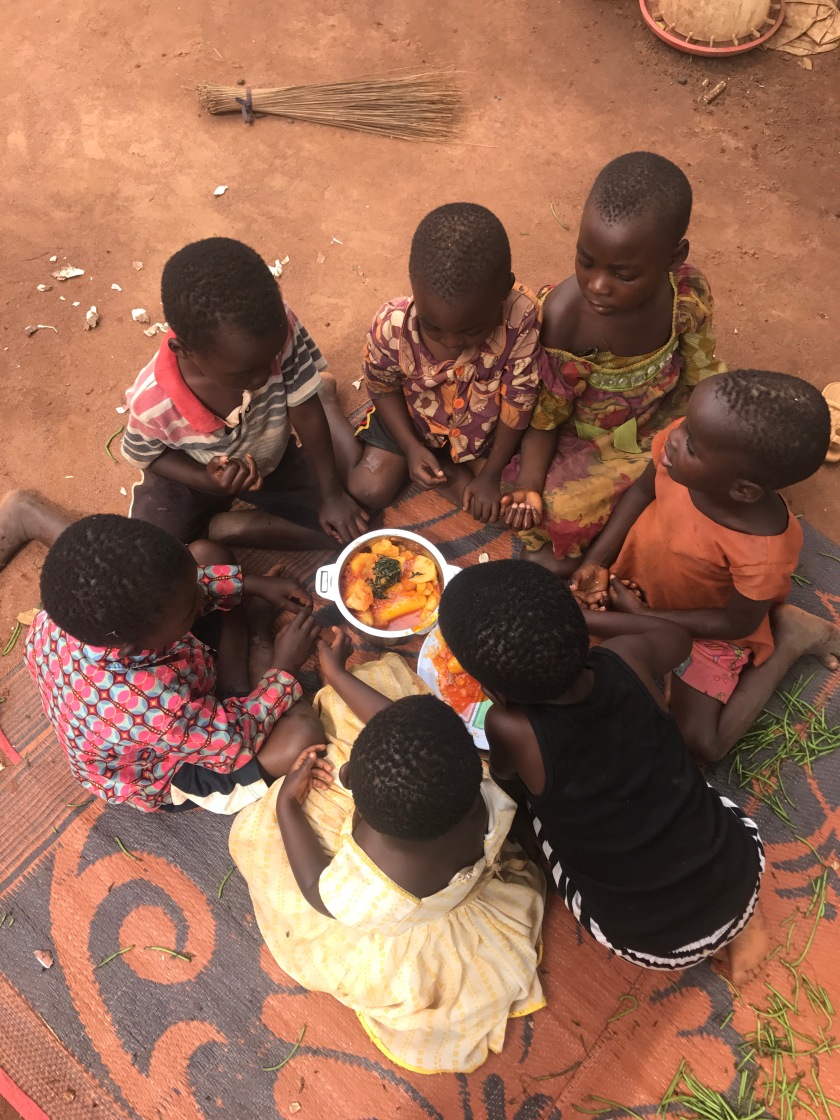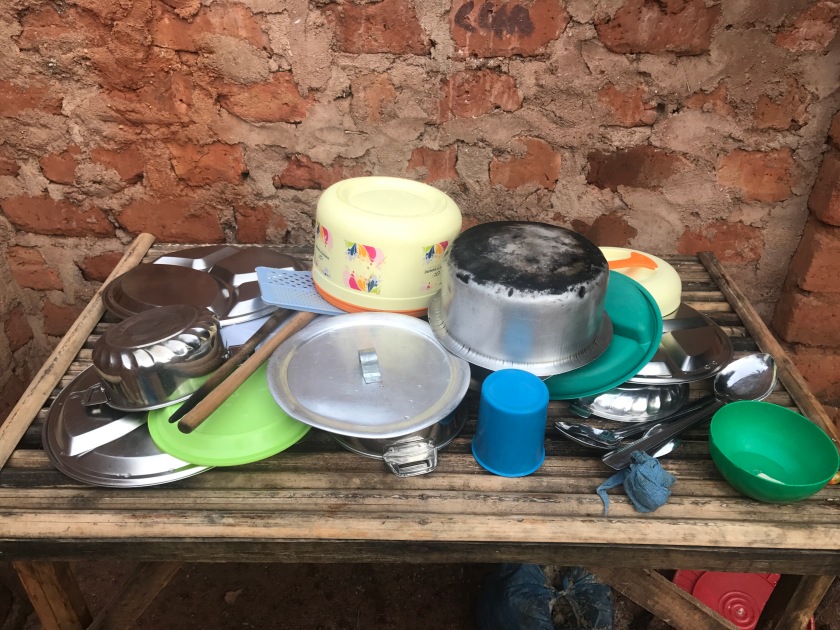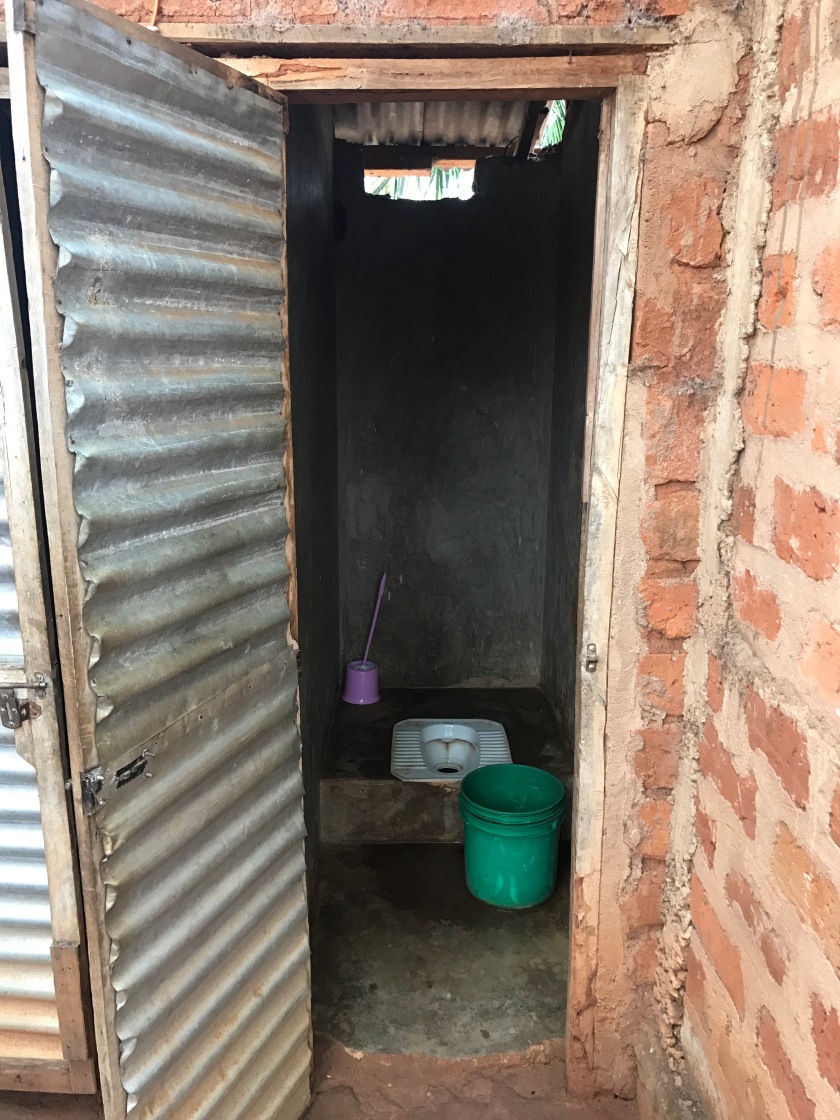 Lucas’ brother Isaia got married yesterday. I am so honored to have been a part of this incredible celebration.
Lucas’ brother Isaia got married yesterday. I am so honored to have been a part of this incredible celebration.
The festivities began on Thursday at the bride’s village for a send off ceremony. In essence this means that the bride price has been paid and the bride’s parents and village agree to send her to her new husband’s home.
Bride price, you ask? Yes. It’s a real thing that still happens. It was explained to me that the bride price was negotiated two years ago and that the two families agreed to 300 USD. Keep in mind, this is a part of the world where people live on less than a dollar a day. Isaia is an construction contractor so he does have an income, but that is still a lot of money. I could go on for a long time about my thoughts about bride prices… but let’s get back to the wedding.
The focus of the send off ceremony was very much on the bride and her sister.
At the send off ceremony guests dance their way to the bride in a line carrying their wedding gifts. Close friends wear matching fabric.
The gifts generally fall into two categories: textiles or water storage. Here a couple gives a large bucket with a lid- a useful and expensive gift.
The groom’s family is also present. Here the groom’s sisters and sister-in-laws give the bride a suitcase. Suitcases are rarely used for travel- instead they serve as a dresser.
This is Asha, Lucas’ wife. They are not officially married yet- but have been together for almost ten years, live together, and have two children. Isaia and his new wife also already live together and have children. I’m told that waiting to get married is common because all of the events are so expensive to host.
These four girls were in front of every processional at every wedding event. They danced their way in with a level of energy and rhythm I have never seen before.
Isaia is 37, and his new wife is in her early 30s. They have 5 children. Here is one of the twins. I was fascinated to observe that their three youngest children were baptized in the same church service as their wedding, prior the exchange of vows.
I was told that the catholic mass would start at 9am. It actually started at 10:30am. I don’t know why I ever listen to any time that is given here- it is never followed. There were fewer people in attendance than I expected: about 10 men and 30 women.
This picture has nothing to do with the wedding but was in the sanctuary as part of the Christmas decorations. The only other time I’ve seen something remotely similar to this was in a Roman Catholic Church in Banos, Ecuador. One of the church member explained to me that this is what people imagine the actual nativity scene looked like. To be honest- it made me giggle.
I don’t know their actual titles, but the bride’s matron of honor was her mother and the groom’s best man was his friend. They were beside the couple the entire day. 8am till midnight.
This church choir sang at the send off ceremony, the church mass, and the celebration after the ceremony. Their harmonies were gorgeous.
After the church service women gathered around the bride to sing and dance in a local tribal language. I was surprised that the bride stood still and generally had a straight face. I’m unclear as to the the role that personality and custom play, but she generally kept her gaze down and rarely smiled the entire day. Yet, I know she was happy.
We caravaned to a local beach for photos after the ceremony. (The bride and groom are just right of the center of this photo.) The vehicle I was in was stopped by the police. Even though I knew I was not in trouble, I find it very uncomfortable when large men in uniform who are speaking a language I don’t understand are visibility mad at something near me. From what I gathered the problem was that one of the men was sitting in the back of the truck while it was moving when the local law says that you have to stand if you are in the back of a moving vehicle (What?!? Who makes these laws?) I don’t know how the problem was resolved but they let us go. I live in an area of Tanzania that is not known for tourism. Consequently, there are very few foreigners here. Thus, locals are not used to seeing white people. As a result, I already receive a lot of attention everywhere I go because of my white skin. Thus, standing in the back of a truck at the second busiest intersection in town, in a wedding caravan, while being stopped by police a lot of people noticed me. For those of you who remember my shy side, you can imagine how uncomfortable this was for me.
Back to the wedding festivities. This is Lucas’ father, Baba Sofia. I adore him. He rarely talks to me but effectively uses hand gestures to communicate with me. He asked me to take this picture of him because he was so proud of the way he was dressed. He is a poor farmer: wearing a jacket like this is a big deal to him. He glowed with joy when I showed him the picture.
After photos at the beach, the caravan made its way to Lucas’ house. I call it Lucas’ house because he is my connection, but really it is his parents’ house and there are 11 people that live there. (10 people share 3 bedrooms, and I have my own until study camp is over at which time I will return to the village.) The space outside the house was transformed to a decorative event space.
The event at Lucas’ house lasted about 6 hours: singing, dancing, performances from the choir, dance performances, presentation of gifts, and more. There was a MC and a DJ. At one point I left to run a quick errand and realized the music could be heard from 6 blocks away.
At the end of the event food was served. Women cooked all of the food and the men served it to the guests. After everyone was served, one of Lucas’ brothers distributed the leftovers to the local children who had gathered to beg for food. This seemingly simple act amazed me. Lucas’ family is very poor by American standards and yet they are so generous and good hearted.
After the food was served, we departed for the reception. Every other event appeared to be open to the public however the reception had an invite list. If you didn’t have your invitation with you, you were not allowed in. (Unless you’re American and know the bouncer: Lucas).
The events at the reception mirrored what happened at the send off ceremony as well at the celebration at the house. At each event there was a three tiered cake. The bride delivered one layer to the groom’s family, one layer to the bride’s family and the third layer was given to guests who gave presents. As she approached each family group she dropped to her knees when about 15 feet away and approached by shuffling on her knees. Upon receiving the cake, the recipients helped her stand up again. I am so curious about this tradition. My interpretation of it is that it is an act of submission that put the bride is a second-class citizen. As a progressive liberal feminist this was hard for me to observe.
After the cake was presented to the families, guests ate once again. Invitations had drink tickets in them for sofa. Rosemary, one of Lucas’ neighbors, bought me a beer. It was the first beer I drank since my parents left Africa… it was delicious. However, out of the 150 guests, only three women and about seven men drank beer. Otherwise, guests drank soda.

As mentioned before, close friends wear the same fabric. I knew that Asha and I were having matching dresses made. However, I was thrilled when Jane and baby Catherine had the same fabric as well. I have now lived with both Asha and Jane- despite language barriers they are my closest friends. I was/am truly touched to be included in this special bond.
(Asha, left, me holding Jane’s daughter Catherine, and Jane, right)
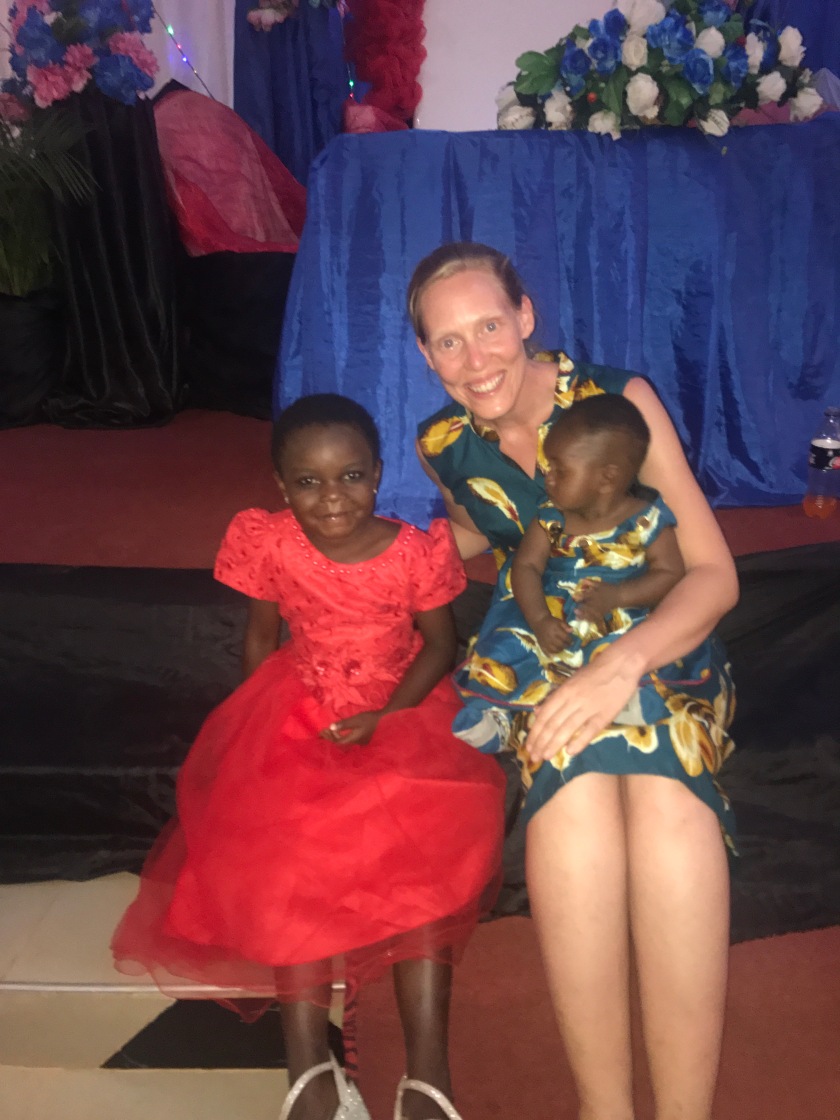
Since my first week in Western Tanzania I have gone by Katherine, not Kate. Katherine is much easier for locals to pronounce. It is pure coincidence that Lucas and Asha have a daughter named Catherine, as do Jane and Ashahadu. Here I am with the other two Catherines. I love these girls so much.
What an incredible wedding celebration!




















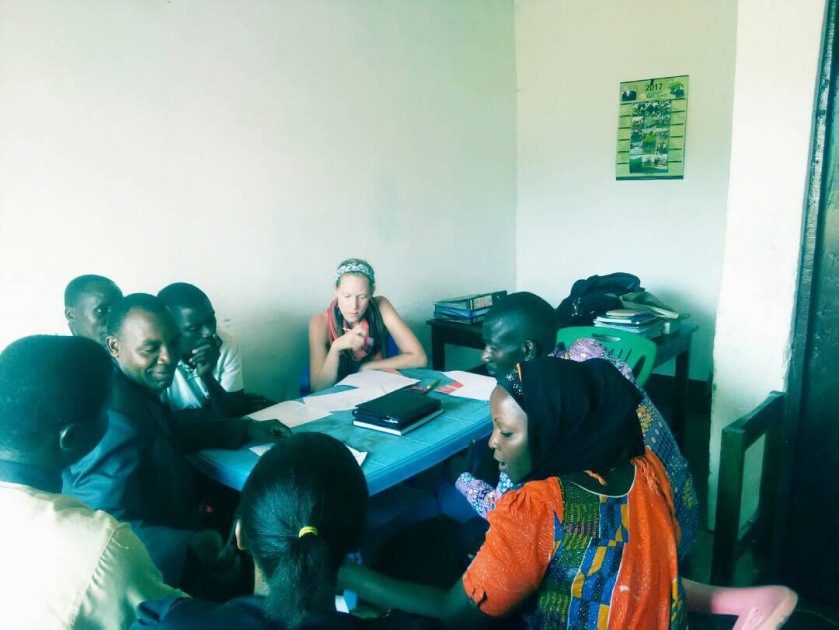








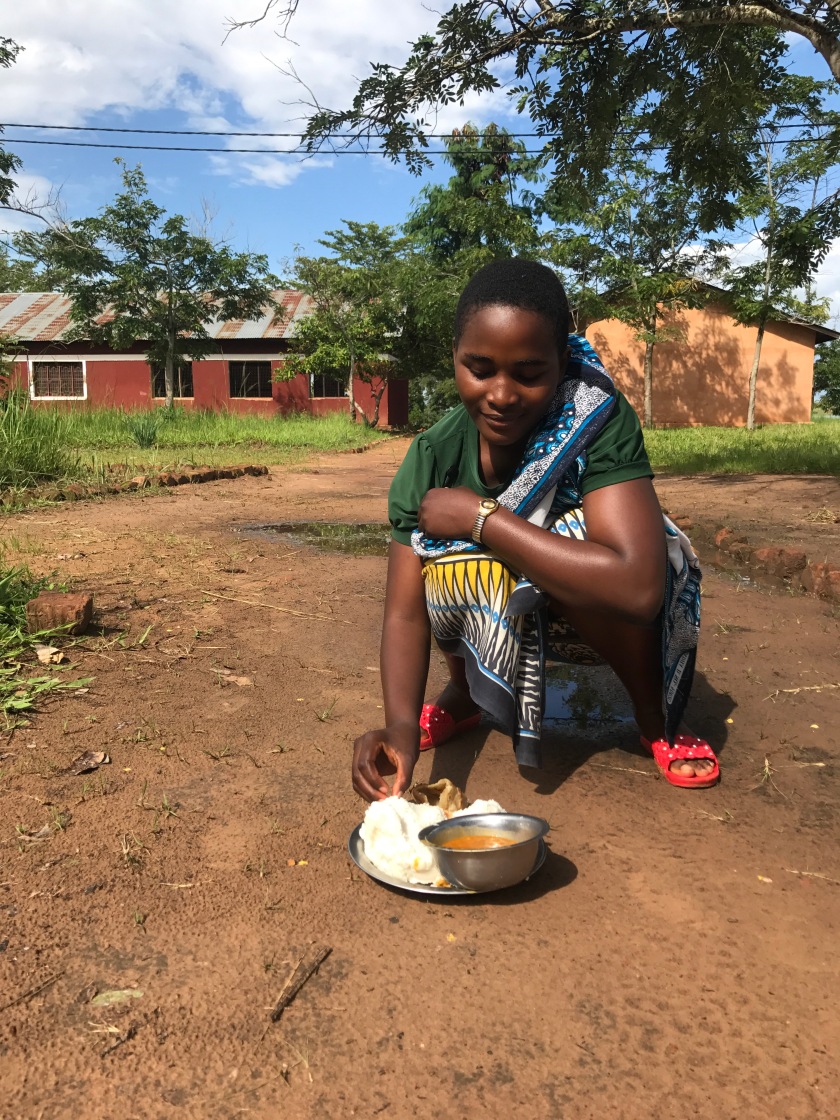





 The first day I taught at the Amahoro Secondary School I was excited and nervous. I was excited for my craft as a teacher to take root in Africa and I was nervous because there were so many things I did not know. I prepared my lesson plan applying the best practices I’ve learned throughout my career. I was ready.
The first day I taught at the Amahoro Secondary School I was excited and nervous. I was excited for my craft as a teacher to take root in Africa and I was nervous because there were so many things I did not know. I prepared my lesson plan applying the best practices I’ve learned throughout my career. I was ready.




 (Here I am talking with students at morning assembly.)
(Here I am talking with students at morning assembly.)




 (Students converse with Project Wezesha’s manager Lucas Lameck as they walk home from Amahoro Secondary School.)
(Students converse with Project Wezesha’s manager Lucas Lameck as they walk home from Amahoro Secondary School.)














